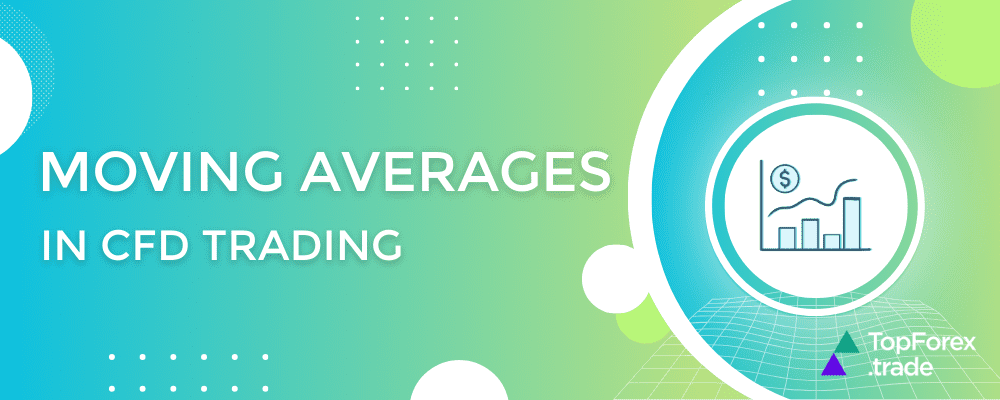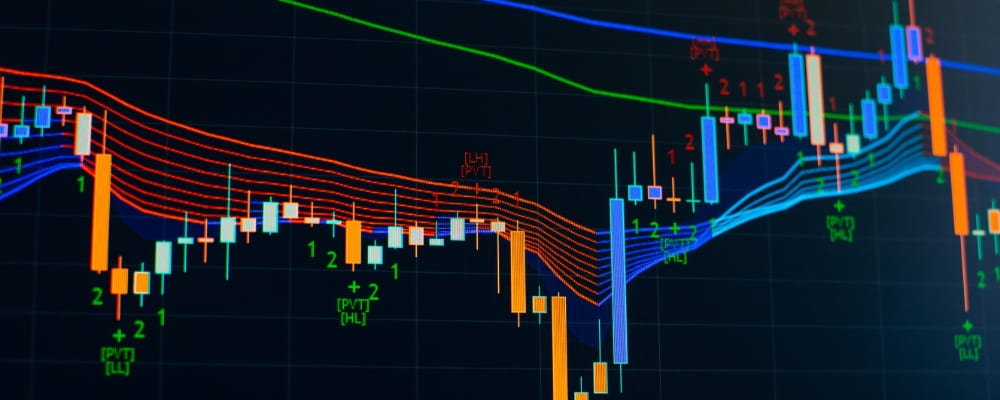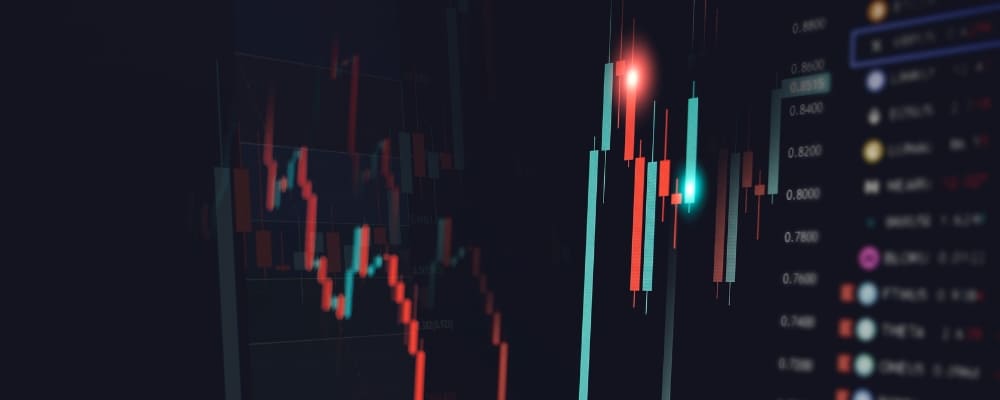Effective CFD trading strategies: leveraging Moving Averages

CFD (Contract for Difference) trading is a popular financial instrument that allows traders to speculate on the price movements of various assets, including stocks, commodities, indices, and currencies, without actually owning the underlying asset. Unlike traditional investing, CFD trading involves a contract between the trader and the broker, where the trader profits or loses based on the difference in the asset’s price from the time the contract is opened to when it is closed. This flexibility, combined with the ability to trade on margin, makes CFDs an attractive option for traders looking to capitalize on both rising and falling markets.
In the world of CFD trading, Technical analysis plays a crucial role in making informed trading decisions. By analyzing price charts and utilizing various technical indicators, traders can gain insights into market trends, potential entry and exit points, and overall market sentiment. Among the numerous tools available, moving averages stand out as one of the most widely used and effective indicators in technical analysis.
Moving averages help traders smooth out price data, making it easier to identify the direction of the trend and potential reversals. They are essential in filtering out the “noise” from price fluctuations, allowing traders to focus on the underlying trend. Whether you are a novice or an experienced trader, understanding how to use moving averages in CFD trading can significantly enhance your trading strategy and improve your chances of success.
What are Moving Averages?

Moving averages are a fundamental tool in Technical analysis, used to smooth out price data over a specified period of time. By averaging the prices over a certain period, moving averages help traders filter out short-term fluctuations or “noise,” and identify the underlying trend. They provide a clear visual representation of the price trend, making it easier to determine the direction of the market.
Moving averages are “lagging” indicators, meaning they are based on past price data and, therefore, follow the market’s movement rather than predicting future price actions. Despite this, they are invaluable for identifying trends, support and resistance levels, and potential reversal points.
Types of Moving Averages
There are several types of moving averages, but the two most commonly used in CFD trading are the Simple Moving Average (SMA) and the Exponential Moving Average (EMA).
- Simple Moving Average (SMA)
The Simple Moving Average (SMA) is the most basic form of moving average. It is calculated by taking the average of a specified number of closing prices over a particular period. For example, a 10-day SMA would add up the closing prices of the last 10 days and divide by 10.
Example: If you want to calculate the 5-day SMA, and the closing prices for the last 5 days are $10, $12, $14, $13, and $15, the SMA would be calculated as follows:
SMA = (10 + 12 + 14 + 13 + 15) : 5 = 12.8
The SMA would be plotted on the chart at the value of 12.8, representing the average closing price over the last 5 days.
- Exponential Moving Average (EMA)
The Exponential Moving Average (EMA) is a more advanced type of moving average that gives more weight to recent price data. This makes it more responsive to recent price changes compared to the SMA. The EMA is particularly useful in fast-moving markets, where recent price actions are more relevant.
The formula for calculating the EMA is more complex, as it involves a multiplier:
EMA = ((Closing Price – Previous EMA) : K)) + Previous EMA
Where K is the smoothing constant, calculated as K = 2 : (n+1), where n is the number of periods.
To calculate the 5-day EMA, you would first need to calculate the SMA for the first period, and then use the EMA formula to apply the smoothing constant to the subsequent periods.
The EMA reacts more quickly to recent price changes, making it a popular choice for traders who want to capture shorter-term trends.
Comparison between SMA and EMA
- Responsiveness: The EMA is more responsive to recent price movements due to the weighting factor, making it quicker to signal potential reversals or changes in trend. The SMA, on the other hand, smooths out price data more evenly and is less sensitive to short-term price fluctuations.
- Lag: Since the SMA equally weights all periods, it lags behind the price more compared to the EMA. The EMA’s reduced lag makes it more suitable for fast-moving markets, while the SMA is preferred for long-term trend analysis.
- Application: Traders often choose between SMA and EMA based on their trading style and market conditions. For example, the EMA may be better suited for day traders or swing traders who need to react quickly to price movements, while the SMA is often used for identifying long-term trends.
Why you should use Moving Averages in CFD trading

One of the primary reasons traders use moving averages is to identify trends in the market. Trends can be upward (bullish), downward (bearish), or sideways (neutral). Recognizing the trend direction is critical in CFD trading because it helps traders align their trades with the market’s momentum, increasing the likelihood of success.
- Uptrend: When the price is consistently above a moving average, it typically indicates an uptrend. Traders might look for buying opportunities in such scenarios, as the overall market sentiment is positive.
- Downtrend: Conversely, when the price is below a moving average, it suggests a downtrend, and traders may consider selling or shorting opportunities.
- Trend strength: The slope of the moving average can also indicate the strength of the trend. A steep slope suggests a strong trend, while a flatter slope might indicate a weakening trend or a potential reversal.
By observing how the price interacts with moving averages, traders can get a clear indication of the market’s direction, helping them make more informed trading decisions.
Smoothing price data with Moving Averages
Market prices are often volatile, with frequent fluctuations that can make it difficult to determine the true trend. Moving averages address this issue by smoothing out price data over a specified period, making the underlying trend more visible. This smoothing effect is particularly useful in CFD trading, where traders need to act quickly and decisively.
- Reducing noise
In a highly volatile market, prices can swing wildly, making it challenging to distinguish between random price movements and meaningful trends. Moving averages reduce this “noise,” allowing traders to focus on the overall market direction rather than getting distracted by short-term price spikes.
- Clarifying market conditions
By averaging price data, moving averages provide a clearer picture of the market’s condition, whether it’s trending, ranging, or reversing. This clarity is essential for traders who rely on technical analysis to guide their trading strategies.
Setting entry and exit points with Moving Averages
Moving averages are not only useful for identifying trends but also play a crucial role in setting entry and exit points in CFD trading. These points are critical for maximizing profits and minimizing risks.
- Entry points:
Traders often use moving averages to determine the optimal time to enter a trade. For example, in a moving average crossover strategy, a buy signal is generated when a shorter-term moving average (e.g., 10-day SMA) crosses above a longer-term moving average (e.g., 50-day SMA). This crossover suggests that the market may be shifting from a downtrend to an uptrend, signaling a potential buying opportunity.
- Exit points:
Similarly, moving averages can help identify exit points. In the same crossover strategy, a sell signal is generated when the shorter-term moving average crosses below the longer-term moving average, indicating a potential reversal to a downtrend. Exiting the trade at this point can help protect profits or minimize losses.
- Stop-loss placement:
Traders can also use moving averages to set stop-loss levels. For instance, placing a stop-loss slightly below a key moving average in an uptrend can protect against sudden market reversals while allowing the trade to continue benefiting from the trend.
By incorporating moving averages into their trading strategies, CFD traders can develop a systematic approach to entering and exiting trades. This helps them stay disciplined, reducing the emotional aspect of trading and improving their overall trading performance.
Popular Moving Average strategies for CFD trading

Moving averages are versatile tools that can be employed in various trading strategies to improve decision-making and enhance profitability in CFD trading. Below are some of the most popular moving average strategies that traders use to navigate the markets.
Moving Average Crossover strategy
The Moving Average Crossover Strategy is one of the most widely used approaches in CFD trading. It involves using two moving averages—typically a short-term and a long-term moving average—to identify potential buy and sell signals. The core idea is that when the short-term moving average crosses above the long-term moving average, it signals a potential upward trend (bullish crossover). Conversely, when the short-term moving average crosses below the long-term moving average, it suggests a potential downward trend (bearish crossover).
- Buy signal: A trader might use a 10-day SMA (short-term) and a 50-day SMA (long-term). If the 10-day SMA crosses above the 50-day SMA, it indicates that recent prices are trending higher, suggesting a good entry point for a long (buy) position.
- Sell signal: Conversely, if the 10-day SMA crosses below the 50-day SMA, it indicates that recent prices are trending lower, signaling an opportunity to exit a long position or enter a short (sell) position.
This strategy is popular because it simplifies the decision-making process, providing clear entry and exit signals based on moving average crossovers.
Support and Resistance levels
Moving averages can also act as dynamic support and resistance levels, which are critical concepts in technical analysis. In an uptrend, the price often finds support at the moving average, while in a downtrend, the moving average can act as resistance.
- Support: When the price is above the moving average, the moving average tends to act as a support level. Traders often look for buying opportunities when the price pulls back to the moving average and bounces off it.
- Resistance: When the price is below the moving average, the moving average acts as resistance. In this case, traders may look to sell or short when the price rallies to the moving average and fails to break above it.
Traders can use these dynamic support and resistance levels to make informed trading decisions. For example, in an uptrend, a trader might place buy orders near the moving average, anticipating that the price will find support and continue higher. Conversely, in a downtrend, a trader might place sell orders near the moving average, expecting the price to encounter resistance and continue lower.
By using moving averages in this way, traders can effectively time their entries and exits, maximizing their chances of success.
Pro tip: Look through real chart analysis examples we prepared on Apple stocks, NVDA stocks, gold futures, the S&P500 index, or the NASDAQ Composite index to see how it works in real life.
Trend Following strategy
The Trend Following strategy is another popular approach that relies on moving averages to identify and follow long-term market trends. In this strategy, traders use longer-term moving averages (e.g., 50-day, 100-day, or 200-day SMA) to determine the overall direction of the market. The goal is to enter trades in the direction of the prevailing trend and stay in those trades as long as the trend remains intact.
- Uptrend: If the price is consistently above a long-term moving average, it suggests a sustained uptrend. Traders might hold long positions during this period, aiming to capitalize on the continuing upward movement.
- Downtrend: If the price is below a long-term moving average, it indicates a sustained downtrend. Traders might hold short positions, profiting from the continued downward movement.
To stay in trades, traders often use trailing stops based on moving averages. For instance, in an uptrend, a trader might place a stop-loss slightly below the moving average to lock in profits as the trend progresses. As the price moves higher, the stop-loss can be adjusted accordingly, allowing the trader to stay in the trade as long as the trend continues while protecting against potential reversals.
This strategy is particularly useful in trending markets, where the goal is to ride the trend for as long as possible, capturing significant price movements.
Moving Average Envelope
A Moving Average Envelope is a trading indicator consisting of two bands plotted at a fixed percentage above and below a moving average. These bands create a channel within which the price typically moves. The envelope is designed to capture the price range, helping traders identify overbought and oversold conditions, as well as potential breakout points.
- Upper band: The upper envelope is plotted above the moving average at a set percentage. When the price approaches or exceeds this upper band, it may indicate that the asset is overbought, and a reversal or pullback could be imminent.
- Lower band: The lower envelope is plotted below the moving average at the same percentage distance. When the price approaches or falls below this lower band, it may indicate that the asset is oversold, and a rebound could be expected.
Traders use moving average envelopes to identify potential reversal points and to set entry and exit levels. For example, a trader might enter a short position when the price touches or exceeds the upper band, anticipating a pullback. Conversely, a trader might enter a long position when the price touches or falls below the lower band, expecting a rebound.
Moving average envelopes are particularly useful in markets with clear price cycles or in range-bound conditions, where prices oscillate within a predictable range.
By incorporating these strategies into their trading plan, CFD traders can leverage the power of moving averages to enhance their decision-making and improve their trading performance.
List of the leading CFD brokers in 2024

When trading CFDs, having the right tools and strategies, such as moving averages, is crucial for success. However, equally important is choosing a reliable and reputable broker that supports your trading needs. Partnering with top-tier brokers like the ones mentioned below can significantly enhance your trading experience, providing you with advanced platforms, competitive spreads, and access to a wide range of assets.
These brokers are known for their excellence in the industry, offering traders a range of benefits that complement the use of technical analysis tools like moving averages:
XTB: advanced trading tools and education
XTB is renowned for its powerful trading platforms, including xStation, which offers advanced charting tools, customizable indicators, and real-time data. These features are particularly beneficial when implementing strategies involving moving averages, as they allow for precise analysis and execution.
Benefits for Moving Average strategies:
XTB provides an extensive library of educational resources and market analysis, helping traders refine their understanding of moving averages and other technical indicators.
Plus500: user-friendly platform with risk management tools
Plus500 offers a user-friendly platform that is ideal for both beginners and experienced traders. It includes built-in risk management tools like stop-loss orders, which are essential when trading with moving averages to protect against market volatility.
Benefits for Moving Average strategies:
The simplicity and efficiency of Plus500’s platform make it easy to implement moving average strategies, with features that help you quickly identify trends and set appropriate entry and exit points.
XM: competitive spreads and extensive market access
XM is known for its competitive spreads, which can be as low as 0.0 pips, making it an attractive choice for traders who want to maximize their profits while using moving averages to identify trading opportunities.
Benefits for Moving Average strategies:
XM’s wide range of assets, from forex to commodities, allows traders to apply moving average strategies across various markets, enhancing diversification and potential returns.
AvaTrade: innovative trading solutions and automated trading
AvaTrade offers innovative trading solutions, including automated trading capabilities, which can be used to execute moving average strategies without the need for constant monitoring. This is particularly useful for traders who prefer a hands-off approach.
Benefits for Moving Average strategies:
AvaTrade’s integration with platforms like MetaTrader 4 and 5 allows traders to automate their moving average strategies, ensuring the timely execution of trades based on predetermined criteria.
Exness: high leverage and fast execution
Exness is known for offering high leverage, which can amplify profits when used in conjunction with effective strategies like those based on moving averages. Additionally, Exness provides fast execution speeds, crucial for capturing quick market movements.
Benefits for Moving Average strategies:
The combination of high leverage and fast execution means that traders can maximize the potential of moving average strategies, especially in volatile markets where timing is key.
Choosing the right broker can make a significant difference in the success of your CFD trading strategy. With XTB, Plus500, XM, AvaTrade, and Exness, you gain access to world-class trading platforms, educational resources, and market insights that can enhance your use of moving averages and other technical indicators.
These brokers offer personalized support and resources tailored to both novice and experienced traders, ensuring that you have the guidance needed to effectively use moving averages in your trading strategy.
The advanced charting tools and customizable indicators provided by these brokers allow you to apply moving averages more effectively, whether you’re identifying trends, setting entry and exit points, or confirming market signals.
Also, trading with reputable brokers ensures that your funds are secure and that you are trading in a regulated environment, allowing you to focus on developing and executing your moving average strategies with confidence.
By combining the power of moving averages with the advanced tools and features offered by these leading brokers, you can enhance your CFD trading strategy, improve your trading accuracy, and increase your potential for success in the markets.
Related articles:
How to use Moving Averages in CFD trading - FAQ